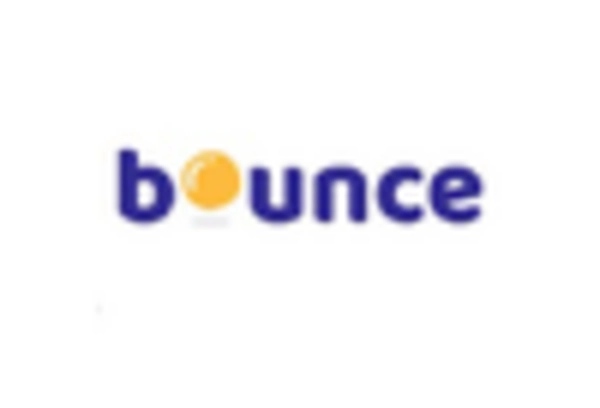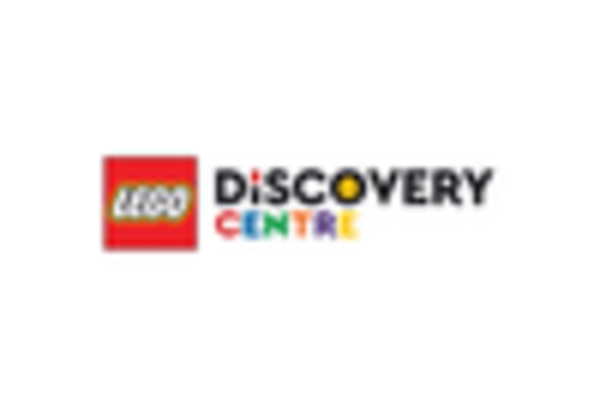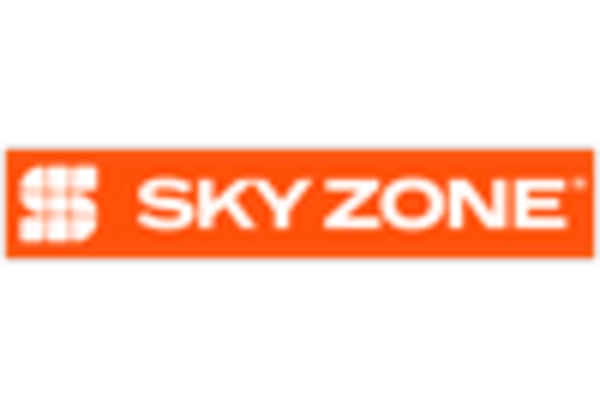Expansion of Urban Areas
The expansion of urban areas is serving as a crucial driver for the Children Entertainment Center Market Industry. As cities grow and populations increase, there is a corresponding rise in demand for recreational facilities that cater to families. Urbanization often leads to a higher concentration of families seeking accessible entertainment options, which can drive the establishment of new centers in these areas. Market trends indicate that entertainment centers located in urban settings tend to experience higher foot traffic, as families look for convenient options to engage their children. Furthermore, the Children Entertainment Center Market Industry may benefit from strategic partnerships with local businesses and community organizations to enhance visibility and attract visitors. As urban areas continue to expand, the potential for growth within the market appears promising, with opportunities for innovation and diversification.
Rising Disposable Income
The increasing disposable income among families appears to be a pivotal driver for the Children Entertainment Center Market Industry. As parents experience enhanced financial stability, they are more inclined to allocate funds towards leisure activities for their children. This trend is reflected in various regions, where families are prioritizing entertainment options that provide both enjoyment and educational value. The Children Entertainment Center Market Industry is likely to benefit from this shift, as parents seek out venues that offer diverse experiences, from interactive play areas to educational workshops. Furthermore, data indicates that regions with higher disposable income levels witness a greater frequency of visits to entertainment centers, suggesting a correlation between economic prosperity and market growth. This driver may continue to influence the market as economic conditions evolve.
Growing Emphasis on Family Bonding
The growing emphasis on family bonding is emerging as a significant driver for the Children Entertainment Center Market Industry. Parents increasingly recognize the importance of spending quality time with their children, leading to a rise in family-oriented entertainment options. This trend is reflected in the design and offerings of many entertainment centers, which are now tailored to facilitate shared experiences among family members. Market analysis indicates that centers promoting family-friendly activities, such as collaborative games and interactive exhibits, are likely to see increased patronage. Furthermore, the Children Entertainment Center Market Industry may benefit from partnerships with local organizations that promote family engagement, thereby enhancing visibility and attracting a broader audience. This focus on family bonding could potentially shape the future landscape of the market, as centers adapt to meet the evolving needs of families.
Innovative Entertainment Offerings
The Children Entertainment Center Market Industry is witnessing a surge in innovative entertainment offerings, which could significantly enhance customer engagement. Centers are increasingly incorporating technology-driven attractions, such as virtual reality experiences and interactive gaming zones, to captivate the interest of children. This trend not only enriches the entertainment experience but also aligns with the preferences of tech-savvy younger generations. Market data suggests that centers that adopt these innovations tend to attract a larger audience, thereby increasing foot traffic and revenue. Additionally, the introduction of themed events and seasonal activities may further entice families to visit, creating a dynamic environment that encourages repeat patronage. As competition intensifies, the ability to offer unique and engaging experiences may become a critical factor for success in the Children Entertainment Center Market Industry.
Increased Awareness of Child Development
Increased awareness of child development is influencing the Children Entertainment Center Market Industry in notable ways. Parents are becoming more informed about the role of play in cognitive and social development, prompting them to seek out entertainment options that offer educational benefits. This shift is leading to a demand for centers that provide enriching experiences, such as STEM-based activities and creative workshops. Market data suggests that centers emphasizing educational content alongside entertainment are likely to attract a more discerning clientele, as parents prioritize their children's developmental needs. Additionally, collaborations with educational institutions may enhance the credibility of these centers, further solidifying their position in the market. As awareness of child development continues to grow, the Children Entertainment Center Market Industry may need to adapt its offerings to align with these evolving expectations.


















Leave a Comment